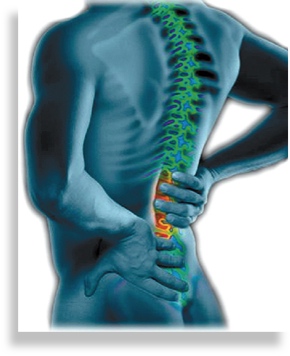Disc Relief -- Houston, TX
For an Appointment Call (281) 496-3355
Since spinal discs have a very poor blood supply, they also depend upon the circulation of joint fluids to bring in nutrients and expel waste. If a spinal joint loses its normal motion and this pumping action is impaired, the health of the disc deteriorates. Like a wet sponge, a healthy disc is flexible. A dry sponge is hard, stiff, and can crack easily. This is how many disc problems begin.
Because of the way each disc is attached to the vertebra above and below it, a disc cannot “slip” as commonly thought. However, trauma or injury to the spine can cause discs to bulge, herniate, or worse, rupture. This can be quite painful, putting pressure on the spinal cord and nerve roots, often interfering with their function.
Dr. Rorick's approach to disc problems is to help restore better motion and proper alignment of the spinal joints resulting in reduction of the disc bulge and eliminating the source of the inflammation so the slow process of healing of the surrounding soft tissues can begin.
While results cannot be guaranteed, many patients have avoided needless surgery or a dependency on pain pills by choosing Dr. Rorick's unique methods.
Because they are attached to vertebrae, discs do not slip, but they do tear, bulge, herniated, prolapse and desiccate.
DISC TEAR
The most common disc injury is a small crack or microtear in the tough, outer cartilage material of the disc called annular fibers. This allows the fluid to start leaking out, and the disc begins to wear thin.
BULGING DISC
The soft jelly-like material in the middle of the disc pushes to one side, forward or backward, and swelling occurs. The nucleus is still contained within the tough outer fibers of the disc, but can still cause pressure and painful symptoms.
HERNIATED DISC
The soft jelly-like material from the nucleus in the middle of the disc ruptures through the tough, outer fibers and extends to the outer edge or beyond the normal limits of the disc.
PROLAPSED DISC
A piece of disc material separates away and becomes a fragment or a free-floating piece.
DESICCATED DISC
The disc loses its fluid content and degenerates down to a rough, worn-down or worn-out appearance. This occurs as the bones begin to fuse to each other.
While the intervertebral disc is a common culprit in spine-related health problems, its function is widely misunderstood.
The disc is a small cartilage pad that is situated between spinal bones. The soft jelly-like center is contained by layers of fibrous tissues. Each disc serves as a connector, spacer, and shock absorber for the spine. When healthy, discs allow normal turning and bending. Discs can bulge, herniate or rupture, resulting in other problems.
The traditional approach to disc problems often ignores spinal function. Dr. Rorick's methods afford him the ability to be extremely specific
Stop suffering from your symptoms.
Call and schedule an appointment with us today!
Call 281-496-3355 to be seen by Dr. Rorick right away!
Houston Health & Wellness / West Houston Chiropractor
Medical Physicians, Chiropractors & Clinical Therapists
2550 Gray Falls Drive, Suite 120 Houston, TX 77077
Phone: (281) 496-3355
Dedicated to providing West Houston families the highest quality care possible.








